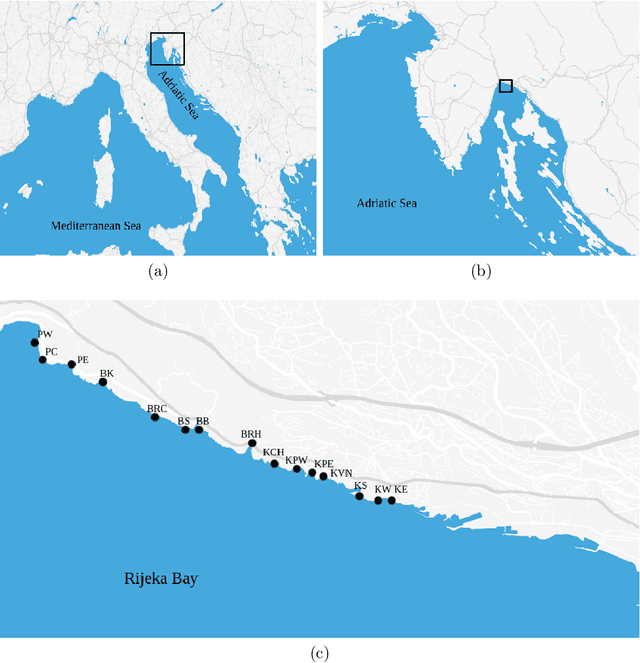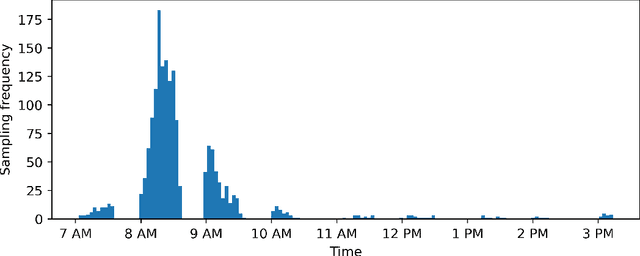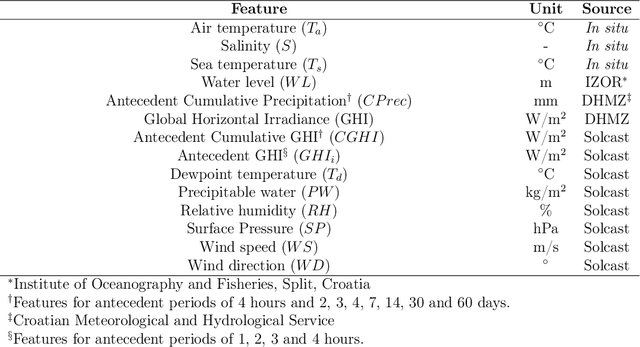Darija Vukić Lušić
Predictive modeling of microbiological seawater quality classification in karst region using cascade model
Feb 11, 2022Abstract:In this paper, an in-depth analysis of Escherichia coli seawater measurements during the bathing season in the city of Rijeka, Croatia was conducted. Submerged sources of groundwater were observed at several measurement locations which could be the cause for increased E. coli values. This specificity of karst terrain is usually not considered during the monitoring process, thus a novel measurement methodology is proposed. A cascade machine learning model is used to predict coastal water quality based on meteorological data, which improves the level of accuracy due to data imbalance resulting from rare occurrences of measurements with reduced water quality. Currently, the cascade model is employed as a filter method, where measurements not classified as excellent quality need to be further analyzed. However, with improvements proposed in the paper, the cascade model could be ultimately used as a standalone method.
Coastal water quality prediction based on machine learning with feature interpretation and spatio-temporal analysis
Jul 09, 2021



Abstract:Coastal water quality management is a public health concern, as poor coastal water quality can harbor pathogens that are dangerous to human health. Tourism-oriented countries need to actively monitor the condition of coastal water at tourist popular sites during the summer season. In this study, routine monitoring data of $Escherichia\ Coli$ and enterococci across 15 public beaches in the city of Rijeka, Croatia, were used to build machine learning models for predicting their levels based on environmental parameters as well as to investigate their relationships with environmental stressors. Gradient Boosting (Catboost, Xgboost), Random Forests, Support Vector Regression and Artificial Neural Networks were trained with measurements from all sampling sites and used to predict $E.\ Coli$ and enterococci values based on environmental features. The evaluation of stability and generalizability with 10-fold cross validation analysis of the machine learning models, showed that the Catboost algorithm performed best with R$^2$ values of 0.71 and 0.68 for predicting $E.\ Coli$ and enterococci, respectively, compared to other evaluated ML algorithms including Xgboost, Random Forests, Support Vector Regression and Artificial Neural Networks. We also use the SHapley Additive exPlanations technique to identify and interpret which features have the most predictive power. The results show that site salinity measured is the most important feature for forecasting both $E.\ Coli$ and enterococci levels. Finally, the spatial and temporal accuracy of both ML models were examined at sites with the lowest coastal water quality. The spatial $E. Coli$ and enterococci models achieved strong R$^2$ values of 0.85 and 0.83, while the temporal models achieved R$^2$ values of 0.74 and 0.67. The temporal model also achieved moderate R$^2$ values of 0.44 and 0.46 at a site with high coastal water quality.
 Add to Chrome
Add to Chrome Add to Firefox
Add to Firefox Add to Edge
Add to Edge